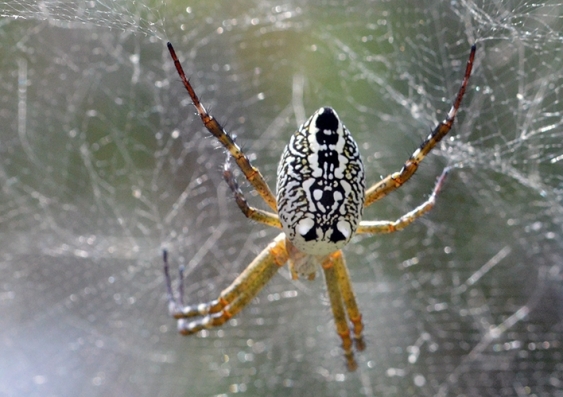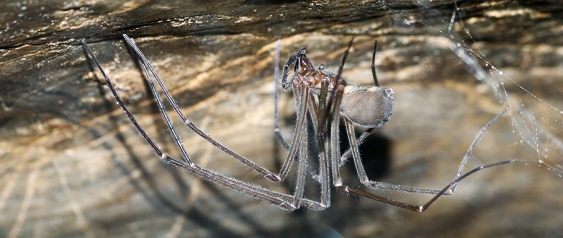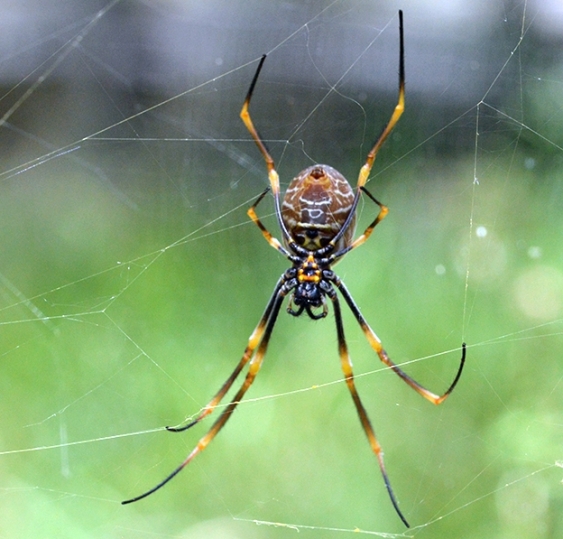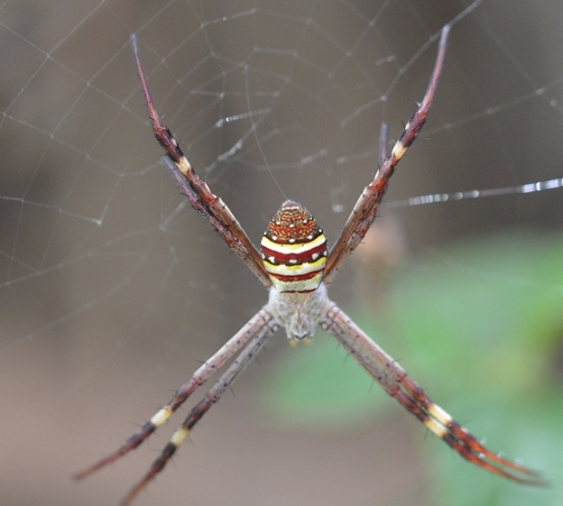World wide web: global spider silk database a boon for biomaterials
A new global study has untangled many of the incredible properties of spider silk.
A new global study has untangled many of the incredible properties of spider silk.

Lachlan Gilbert
UNSW News & Content
(02) 9065 5241
lachlan.gilbert@unsw.edu.au
What’s stronger and tougher than steel, and more elastic than rubber, weight for weight? Spider silk is, and this incredibly versatile material could transform engineering, materials science and even medicine – if we could just work out how to produce it.
Now a new global study that has catalogued web silk properties of almost 1100 spiders hopes to provide a launchpad for the design of future biomaterials that emulate this wonder of nature.
Read more: Research to examine whether 'strong as steel' spider silk can be replicated for manufacturing
Dr Sean Blamires, an evolutionary ecological biologist from UNSW Sydney’s School of Biological, Environmental and Earth Sciences, says the new research, which was published recently in the journal Science Advances, examined the chemical structure, the genetics and the particular way that each spider spins their webs and marked these against the physical properties of the silk.
The team of researchers that spanned Asia, Oceania, Europe and the US spent five years collecting spiders from around the world, observing them, extracting silk and sequencing their transcriptomes – the RNA molecules that are coded to make silk. They added a massive dataset to the existing knowledge base which was previously limited to 52 species of spiders in 18 families, with 1098 new species from 76 families.

The Tasmanian Cave Spider is large and weaves a web that may be more than a metre wide. Photo: UNSW/Sean Blamires
“Up until now there was a pretty good literature set of how spider silk performs, and we’ve seen some good genetic analysis as well with some whole silk transcriptomes mapped out on three or four species,” says Dr Blamires.
“But what has been lacking is a way to generalise across spiders and find out what actually causes specific properties. Is there a link between genes, protein structures and fibres?
“By combining so many species and so many individual samples, it becomes possible to perform some complex models using machine learning to help understand what's happening at every level. Also, how and why you get specific properties for some silks which not only vary greatly between species, but can even vary between individuals.”

Nephila spiders, also known as golden orb-weavers, are known to capture birds and snakes in their webs. Photo: UNSW/Sean Blamires
There are seven types of spider silk and one of them has caught scientists’ imagination for decades for its strength, durability and flexibility: dragline silk.
“We focused on a specific silk called major ambulate silk or dragline silk,” says Dr Blamires.
“In a spiderweb, the dragline silk makes up the framework and the radials. It's also the silk that the spider uses when it drops off a web. Non-web building spiders might use it to make retreats or use it for signalling with each other, while trapdoor spiders use something very similar.”
He says the reason for the interest in dragline silk is that in certain spiders like orb-weaving spiders, it's extremely tough and outperforms Kevlar and steel. But in addition to its hardness, it is flexible.
“So it’s rubbery and tough at the same time, while most other materials are either one or the other.”

Argiope keyserlingi, known commonly as a St Andrew's cross spider, is a species of orb-web spider found on the east coast of Australia, from Victoria to northern Queensland. Photo: UNSW/Sean Blamires
This is the quality that has made it so attractive as a biomaterial to emulate in technological applications. Suggested uses have included a lightweight material to use in bulletproof vests, a flexible building material, biodegradable bottles, or as a non-toxic biomaterial in regenerative medicine that can be used as a kind of scaffold to grow and repair damaged nerves or tissues.
But what is it about spiderweb silk that makes it so different from most other organic and inorganic materials?
Dr Blamires says this is the question that has fascinated humanity for hundreds of years.
“Spider silk is basically made up of proteins called spidroins. We know spiders secrete it from a gland, but how this contributes to its toughness and flexibility, and even the way it is stored in the gland before being secreted, is still somewhat of a mystery. If we want to produce it, we need to understand it.
“And even then, understanding how the spider does it is one step, the next is replicating something similar, possibly using microfluidic technology in a lab.”
Which is where the database of the 1100 spider silk transcriptomes will be so useful to biologists, material scientists and engineers.
“Just like the Human Genome project has given researchers the ability to identify specific gene sequence mutations that cause specific diseases, this database and the accompanying structure-function analyses gives biologists and material scientists the ability to derive direct genetic causes for the properties of spider silk,” Dr Blamires says.